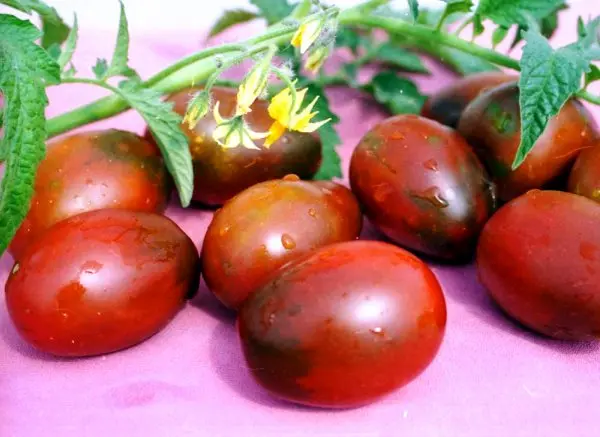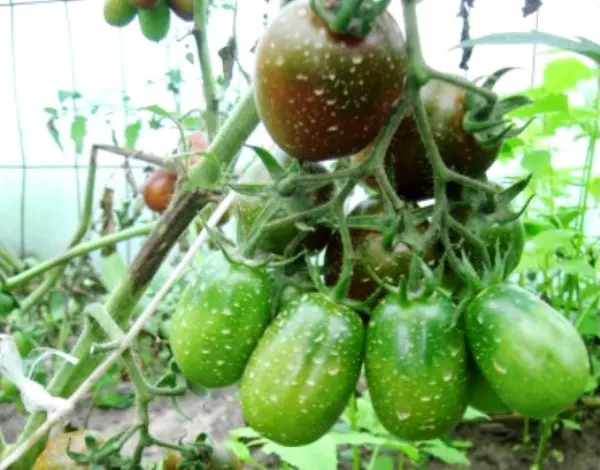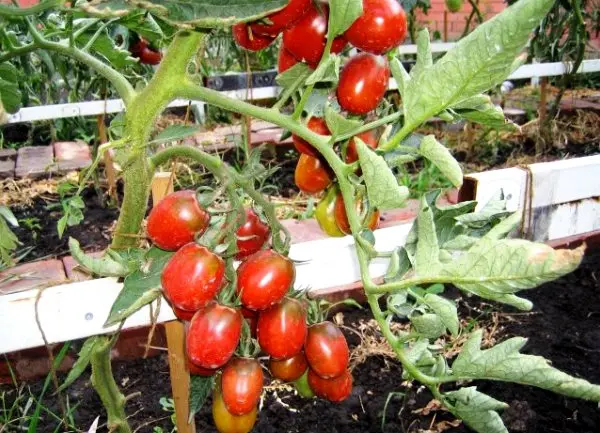Contents
A person tries to take the best from nature, therefore he constantly experiments with plant varieties, trying to bring out what he needs suitable for a certain business. Moreover, at the present stage of development of science, there are opportunities for the improvement of many types. Most often, breeders develop new varieties of horticultural crops and vegetables; as a rule, new plants are adjusted for growing in a particular climatic zone. Tomatoes can be conditionally divided into heat-loving and those that can be planted in colder regions. Therefore, often several hybrids with different characteristics are derived from the same variety. For example, the De Barao tomato has several varieties, the difference between which is not only in the color of the fruit (from lemon yellow to dark red), but also in some other characteristics. This article will be devoted to the description of the De Barao black tomato, the specifics of cultivation and its strengths / weaknesses.
Characteristics of a variety
First of all, it should be noted that the De Barao black tomato is an indeterminate variety, that is, the growth of the bush of this tomato does not stop throughout the entire development of the plant, due to this, the height can reach 2 m and above. In this regard, you will have to form a bush yourself, removing all stepchildren, thus leaving a single stem; pinching, respectively, is not the most rational solution.

In most cases, this variety of tomato is grown in greenhouses. But in warm regions (where summer lasts longer), they practice growing such tomatoes in the open field, having previously prepared long slats for garters. In addition, there are a couple of other nuances. For planting, it is advisable to choose a site with fertile soil (it can even be slightly shaded), but you still have to carry out top dressing in the future. Pay attention to predecessors: tomatoes can be grown after cucumbers, cabbage, legumes. The frequency of planted plants is no more than 2,5-3 pieces per 1 m2.
De Barao ripens in medium terms, approximately 115-125 days after the appearance of the first shoots. Tomato seedlings are planted in March to harvest the first crop in July. The rules for caring for seedlings are the same as for most indeterminate tomato varieties. The first flower brush is formed only in the presence of about 10 leaves (the next – after three leaves), this process cannot be accelerated in any way. The brush is simple, with 8-10 fruits. The tomatoes themselves are oval or egg-shaped, almost black (to be perfectly accurate – dark cherry) in color, each weighs 60-80 grams. The pulp is dense, has a characteristic sweetish aftertaste.

From one De Barao black bush, you can collect up to 5 kg of tomatoes, with extra close care – up to 8 kg. Fruits do not have a special purpose, they can be eaten fresh, added to salads, used for canning.
Advantages and disadvantages
Speaking about the pros and cons of a certain type of vegetable crop, it is necessary to take into account both the external and hidden qualities of the fruit, and the whole plant as a whole. Now let’s try to understand the advantages (and not only) of the De Barao black variety. The main advantage is high yield compared to other varieties of tomatoes (but among “their own” there are more productive ones, for example De Barao royal or pink). Black tomatoes can withstand long-term storage without losing quality, convenient for transportation. These tomatoes are popular among lovers of preservation: the small size of the fruit is ideal for rolling them into jars. Harvested while still unripe, tomatoes ripen well when stored in a warm, sunny place.

De Barao black has a good immunity to diseases, it is practically not affected by late blight. Plants are shade-tolerant, cold-resistant enough, so they can be grown in unheated greenhouses. But in areas with short summers, De Barao tomatoes are unlikely to be a good option to grow, as it is a mid-season variety. The fruits may simply not have time to fully ripen. Gardeners also have trouble caring for the plant, in particular, removing stepchildren. Also, the disadvantages include the late laying of inflorescences.
In general, the tomatoes of the De Barao group leave mostly positive reviews, so if you have not yet tried to grow them in your garden or summer cottage, then be sure to stock up on seeds or seedlings of this variety in the near future.
Video “Growing tomatoes of the De Barao variety. Harvest”
The video shows tall De Barao tomato bushes grown along a wall. The harvest is shown.
Author: Svetlana Galitsina
Loading…









